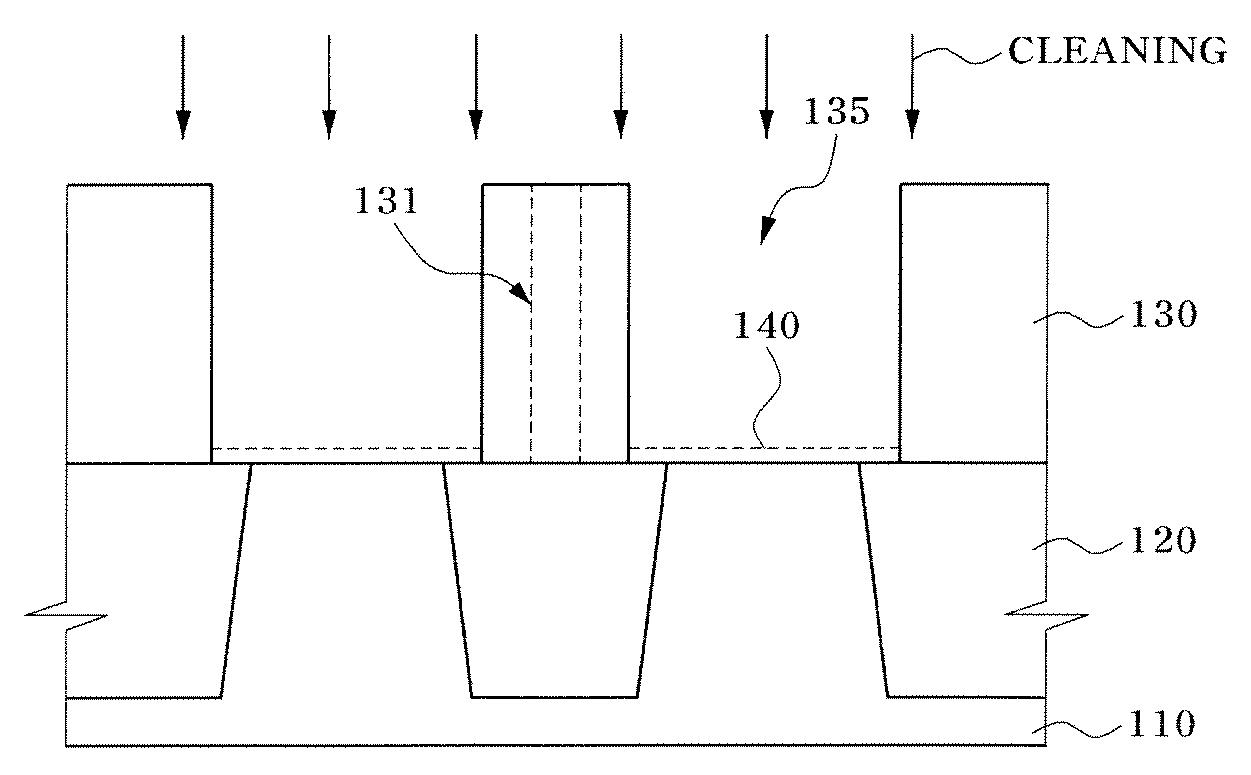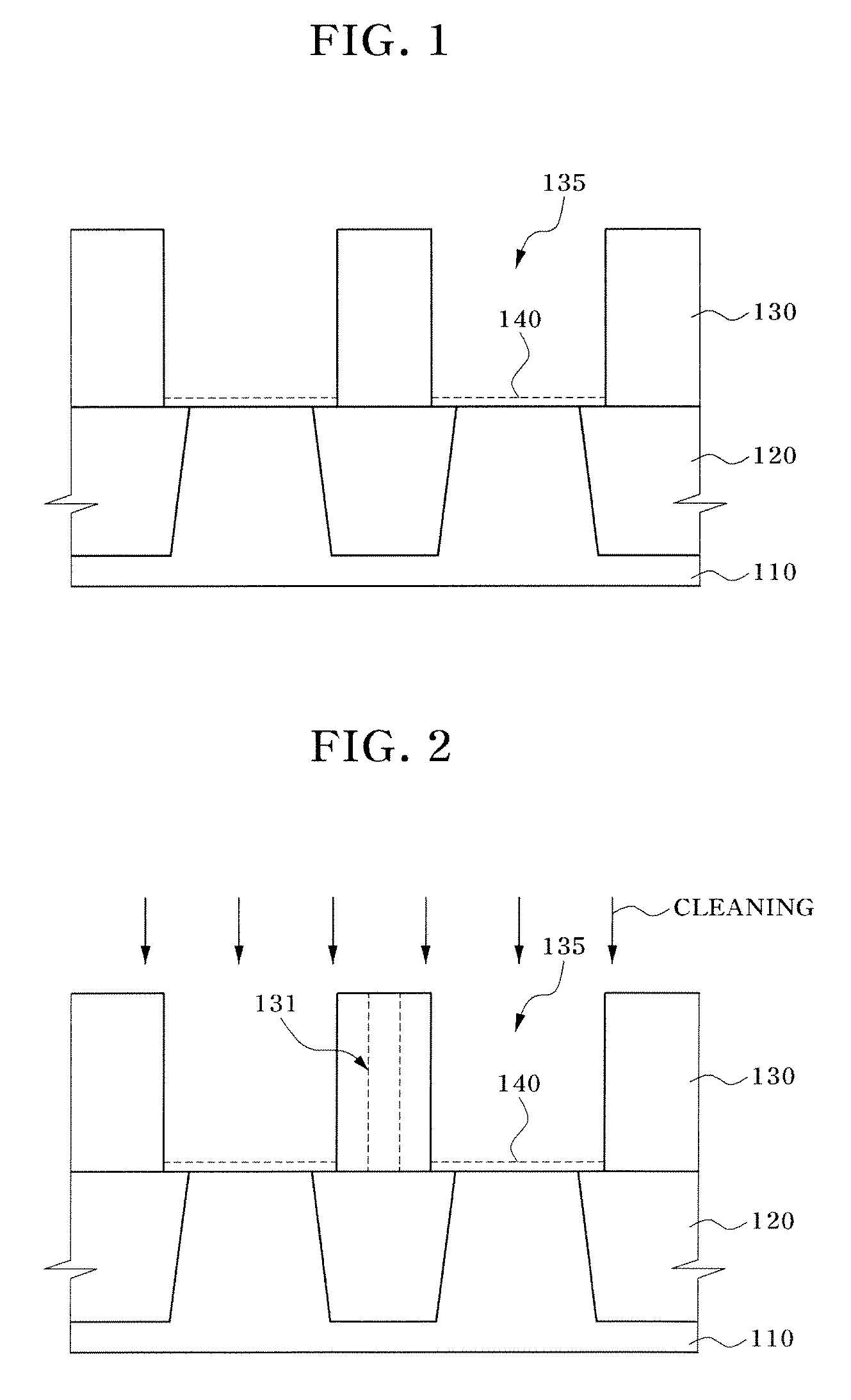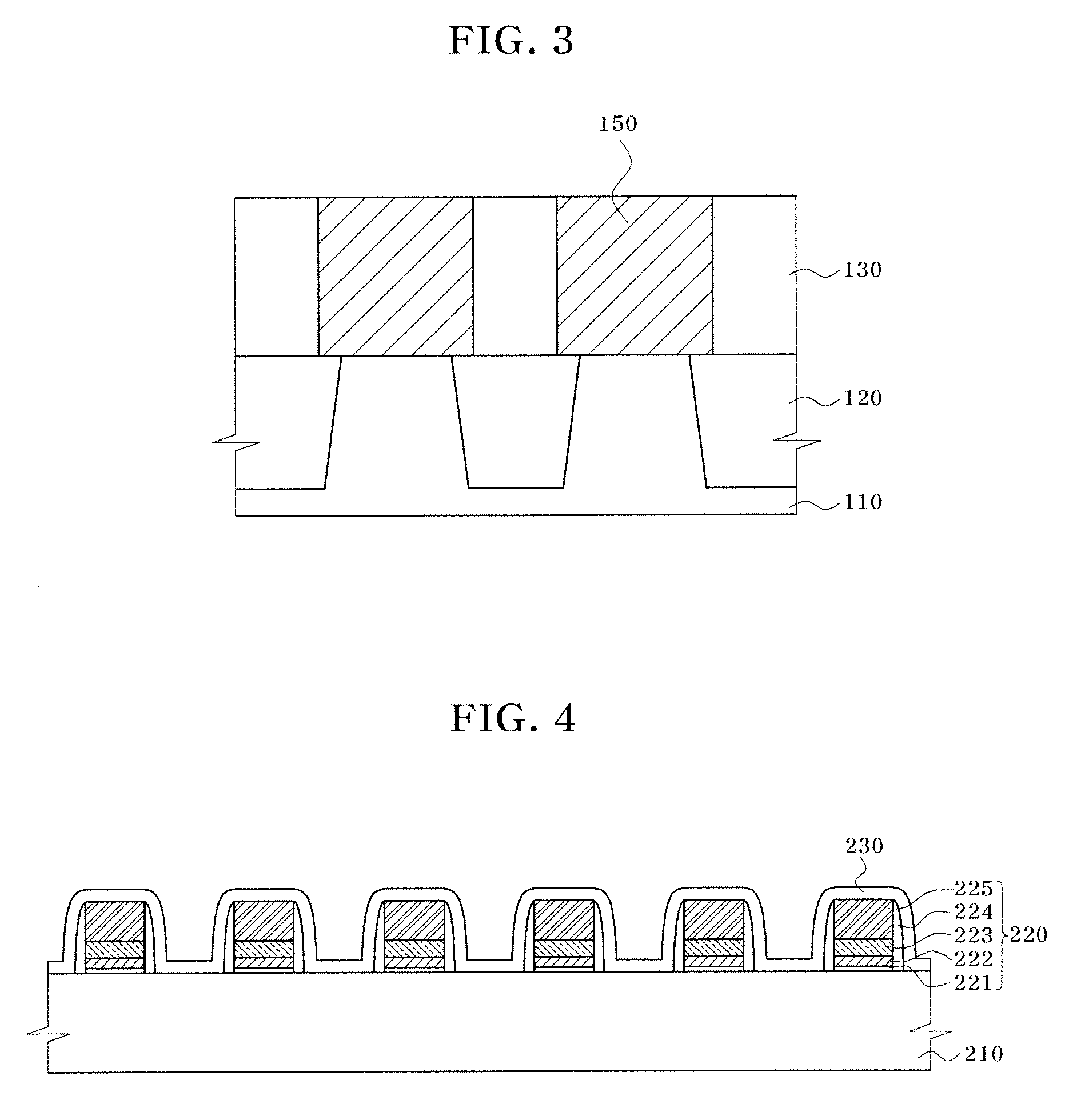Method for Fabricating A Semiconductor Device Comprising Surface Cleaning
a surface cleaning and semiconductor technology, applied in semiconductor/solid-state device manufacturing, basic electric elements, electric devices, etc., can solve the problems of reducing the design rule, restricting the removal of surface contaminants, and limiting the process margin, so as to prevent corrosion loss and efficiently remove native oxides
- Summary
- Abstract
- Description
- Claims
- Application Information
AI Technical Summary
Benefits of technology
Problems solved by technology
Method used
Image
Examples
Embodiment Construction
[0025]The invention is directed to a method for cleaning contaminants on the surface of cleaning target layers using an etchant including a fluorine (F)-containing species dispersed in an alcohol. The cleaning target layer may be a non-oxide layer, e.g., a mono crystalline silicon layer or a polycrystalline silicon layer such as a silicon substrate for example. The cleaning target may be native oxide created by spontaneous oxidation on the surface of the cleaning target layer. The cleaning target layer may be a silicon substrate, a polycrystalline silicon layer, an amorphous silicon layer, a tungsten (W) layer, a tungsten nitride (WN) layer, a tungsten silicide (WSix) layer, a titanium (Ti) layer, a titanium nitride (TiN) layer, a copper (Cu) layer, an aluminum (Al) layer, or a zinc (Zn) layer, for example.
[0026]Silicon oxide is an example of a native oxide. Native oxides have highly densified covalent bonds, when compared to silicon oxides formed by a deposition method such as chem...
PUM
| Property | Measurement | Unit |
|---|---|---|
| weight | aaaaa | aaaaa |
| conductive | aaaaa | aaaaa |
| critical dimension | aaaaa | aaaaa |
Abstract
Description
Claims
Application Information
 Login to View More
Login to View More - R&D
- Intellectual Property
- Life Sciences
- Materials
- Tech Scout
- Unparalleled Data Quality
- Higher Quality Content
- 60% Fewer Hallucinations
Browse by: Latest US Patents, China's latest patents, Technical Efficacy Thesaurus, Application Domain, Technology Topic, Popular Technical Reports.
© 2025 PatSnap. All rights reserved.Legal|Privacy policy|Modern Slavery Act Transparency Statement|Sitemap|About US| Contact US: help@patsnap.com



